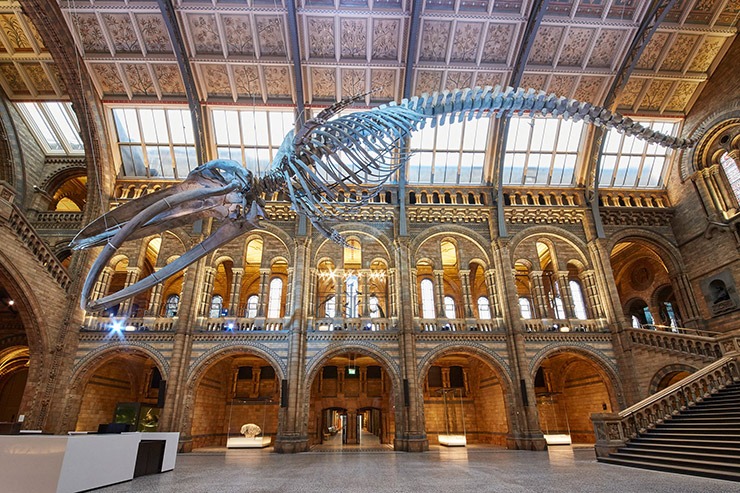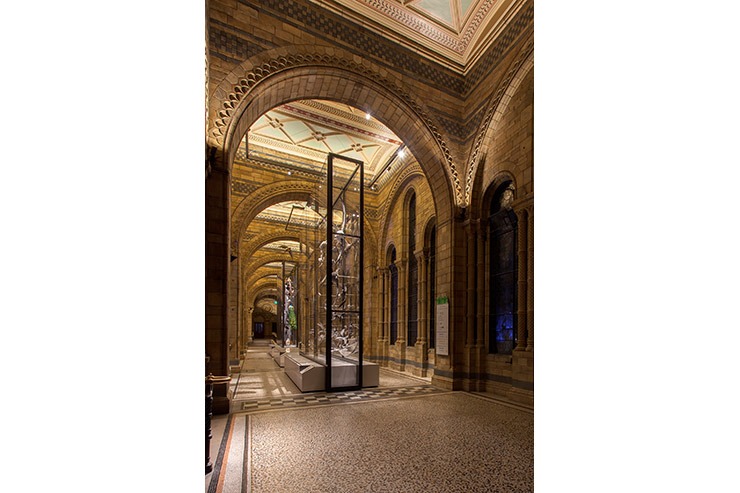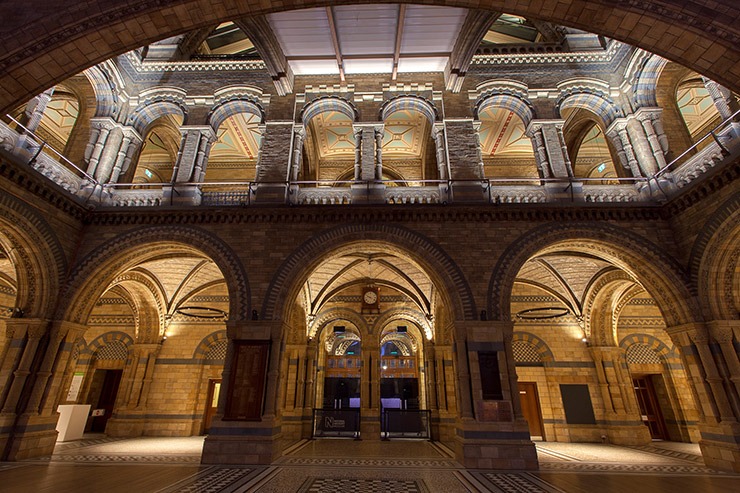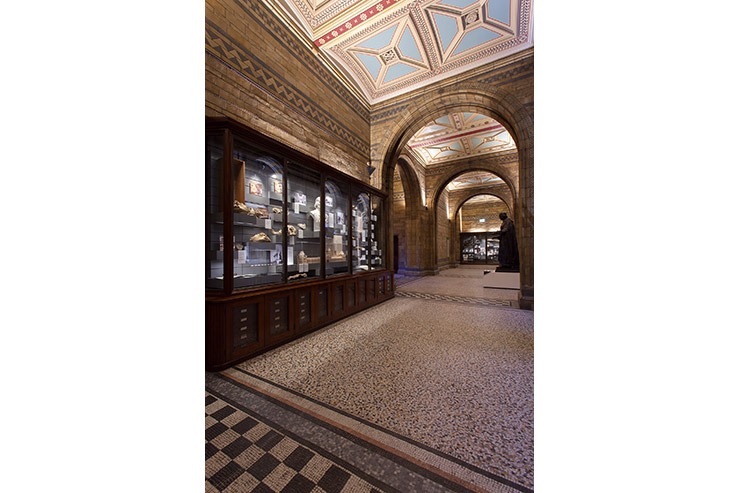This website uses cookies so that we can provide you with the best user experience possible. Cookie information is stored in your browser and performs functions such as recognising you when you return to our website and helping our team to understand which sections of the website you find most interesting and useful.
Hintze Hall, Natural History Museum, UK
ProjectHintze HallLocationLondon, UKLighting DesignDHA Designs, UKInterior DesignCasson Mann, UKClientNatural History MuseumLighting SuppliersLucifer Lighting, Lightworks, Precision Lighting, Light Projects, Dynalite, Lumenpulse
Hintze Hall is the largest public gallery in the Natural History Museum in London, and was described as a ‘cathedral of nature’ when the museum opened in 1881. The museum’s plan was to completely renovate the space entirely in a project that lasted four years, redeveloping the displays over three floors, creating a new visitor entrance space and most controversially of all, replacing ‘Dippy’, the cast of a Diplodocus fossil, with the skeleton of a Blue Whale, eventually named ‘Hope’.
DHA’s scheme replaced a collection of overlapping lighting solutions that had accumulated over the years across the floors of the central hall, using a variety of light sources, with a unified scheme that was entirely solid-state, simultaneously reducing energy costs and maintenance requirements, whilst revealing the complex and beautiful architecture. The scheme also had to include the exhibition lighting across the floors, and to design the lighting for a number of display cases, some of which were designed to be seen from tens of metres away. In all of this, the lighting primarily had to reveal the astonishing grandeur of Waterhouse’s architectural scheme and the astonishing depth of the museum’s core collection of natural history via cased and uncased objects – which included a preserved Marlin in many gallons of silicon fluid, alongside the full-sized whale.
Finally, the scheme also had to develop a complex control system that allow the lighting to be used for the many events that are staged in the space throughout the year, as the hall is one of the most popular spaces to hire in London, whilst managing it to be instantly reset to return it to its use as a public gallery the following morning by the daytime staff who would not be event experts. The solution was to locate the lighting in a number of positions across the hall, concealing all of the locations from view as much as was possible, while still placing them in accessible locations to allow for planned maintenance. Fixtures were chosen from a variety of manufacturers, all of whom could demonstrate technically able fixtures with a small visual impact, all of which could be custom-coloured to work with the unusual terracotta stone colours and required a minimum of control equipment to lessen the impact of wiring. The scheme significantly reduced the energy load of the gallery, has virtually removed all maintenance requirements and has taken away a great deal of the visual ‘clutter’ of the older collection of unrelated lighting systems. The new control system subtly adjusts the lighting across the linked spaces during the museum’s day depending on external lighting and time triggers, reducing the staff requirement to manually set lighting systems, while allowing events staff to set quickly for a cinema show or a full-scale event during the evening. The new space has been highly praised, described as a ‘glorious renaissance’ for the museum.










